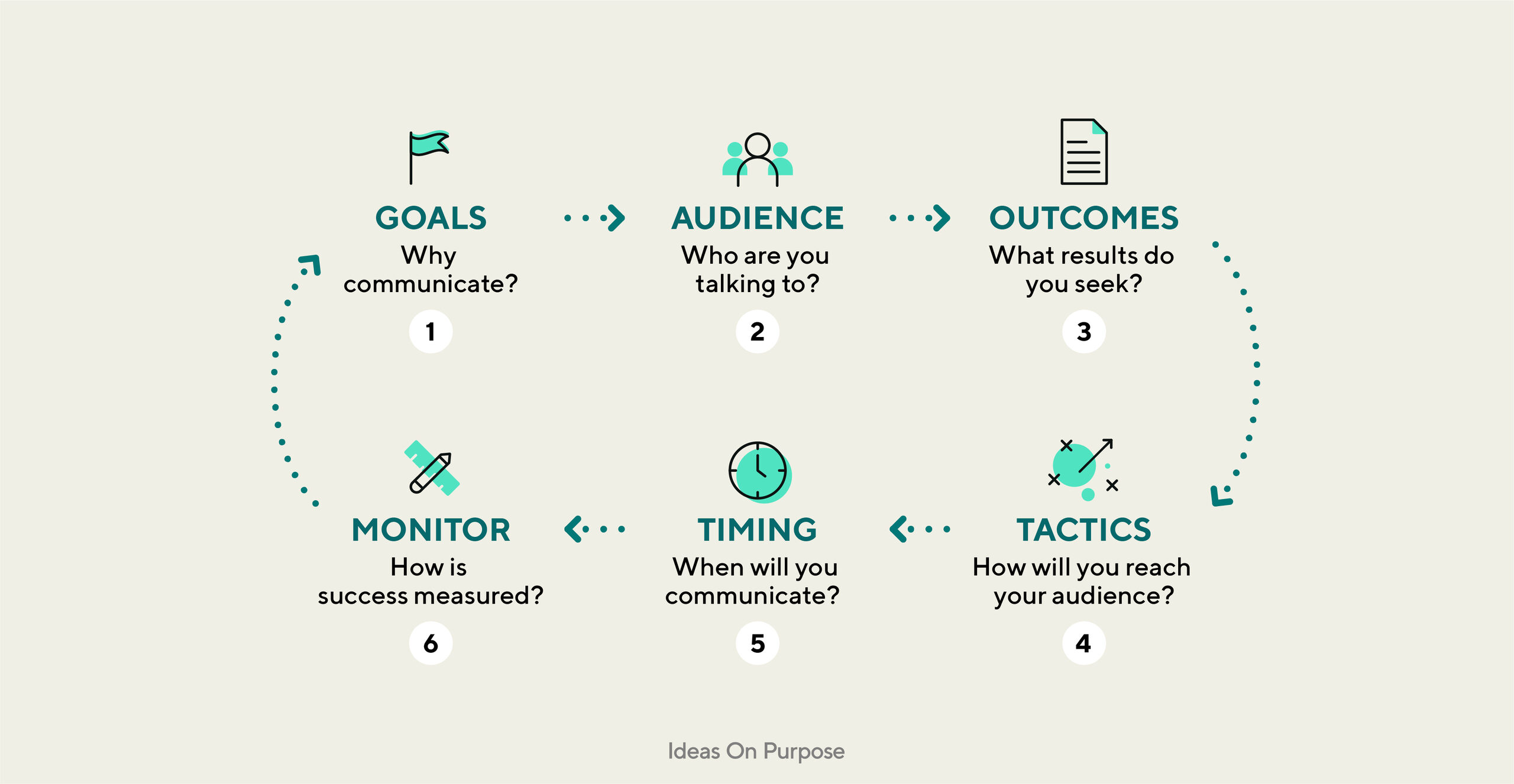6 Elements of a Successful Impact Communications Strategy
Organizations must continuously prove that their actions meet stakeholder expectations and are consistent with their mission and brand values. Consistency is key, whether you are a small team touching everything or a large team dividing responsibilities. You need an impact communications strategy to align efforts and make the most of your investments. And, most importantly, to assure audiences that you are being truthful and transparent so you build trust in the process.
So, how do you create a communications strategy? Start with a good understanding of the current state of your communications and brand: your strengths, weaknesses, opportunities, and threats (yes, that’s a SWOT analysis). We are also assuming you have clearly defined messages to communicate. This will inform your holistic approach to the strategy.
The elements of your strategy:

Goals
Why communicate? What are your goals and how do they align with your business strategy? Also, not to be underestimated… Why should the audience care? You may be passionate, but how are their needs aligned? Goals are the big picture, what the overall communications should be supporting. This is closely tied to outcomes.
Audience
Who are you talking to? This is foundational to any communications plan. Identify the key stakeholders and audiences you aim to reach and engage. Understanding the preferences, needs, and concerns of the target audience is essential for tailoring messages effectively.
Outcomes
What results do you seek? These may vary across audience but should always support your strategic goals. Some communication efforts have a clear call to action— “buy”, “donate” or “sign up.” Others are more nuanced and aim to educate, inform, influence, or build a foundation for later action.
Tactics
How will you reach your audience? There isn’t a one-size-fits-all plan. You need to meet your audiences where they are, and they may not all be in one place. And, ensure that your communication is consistent with your brand identity. Use the same tone, style, and visual elements across all communication channels to create a cohesive brand experience. Map your audiences and messages and then define your tactics. Social media or video may work for some, but long form pieces may be better for others. Be specific, and even if it seems repetitive, using many tactics increases the odds your messages break through.
Timing
When will you communicate? This should also be considered for maximum effectiveness. Are you piggy-backing on breaking news? An annual event? Creating a drumbeat throughout the year? Be sure your messages are relevant, and have room to resonate with the audience. Align this timeline with your overall marketing and business goals, it can be a balancing act.
Monitor
How is success measured? Once you share your messages, your efforts shouldn’t end. Engage with your audience actively and respond to their feedback or inquiries promptly. Find ways to measure your results. You may have metrics such as views or downloads, and more qualitative measures like others echoing your messages, employee uptake and media sentiment. Some may be unique, did you get direct feedback, inquiries, or positive messages? Evaluate what resonated and what didn’t then figure out how to adjust in your next cycle of outreach.
Using Your Impact Communications Strategy
Be flexible and adapt. An impact communications strategy is only the first step in your organization’s journey to inspiring action or demonstrating the value and significance of the impact generated by the organization’s activities. Once you define your strategy consider who will be responsible for acting on it, and who will ensure all communications are aligned? The strategy, on a micro and macro level, should guide the development of all your marketing and communications efforts to ensure that they advance the same strategic ideas. By effectively communicating positive outcomes, your organization can attract support, build credibility, foster relationships, and ultimately advance its mission and objectives.
Get Guidance: Consider expert help
If you find yourself struggling to understand how you can bring your impact strategy or communications to life, consider expert help. Check out some of the stakeholder-pleasing sustainability/ESG reports and impact communications Ideas On Purpose has created — and email us to get in touch if you need help with yours.
Photo by Annie Spratt on Unsplash